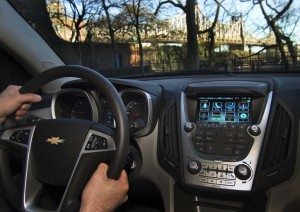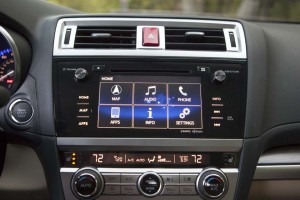
Newer infotainment systems often require drivers to avert their eyes from the roads, leading to more dangerous driving.
For so long, researchers have focused on how cellular phones facilitate a variety of distracted driving behaviors, such as texting and driving. A new study now shows that vehicles themselves can be a distraction.
The AAA Foundation for Traffic Safety released a report suggesting that the latest infotainment systems in new vehicle promote distracted driving behaviors and on a scale greater than cell phones.
Fatal crashes are on the rise in the U.S., and distracted driving is a major reason for the increase, the foundation believes. Deaths involving distracted driving jumped 8.8% to 3,477 in 2015, the latest year in which statistics were available, according to the National Highway Traffic Safety Administration.
“Some in-vehicle technology can create unsafe situations for drivers on the road by increasing the time they spend with their eyes and attention off the road and hands off the wheel,” said Dr. David Yang, executive director of the AAA Foundation for Traffic Safety.
(New vehicles costing Americans an extra $706 each month. Find out more, Click Here.)
“When an in-vehicle technology is not properly designed, simple tasks for drivers can become complicated and require more effort from drivers to complete.”
In AAA’s study, which included 30 infotainment systems tested by University of Utah researchers, distraction was “very high” on 12 of systems, “high” on 11 and “moderate” on seven. None of the systems generated “low” distraction, according to the researchers.

Subaru's infotainment system uses a 6.2-inch touchscreen, though there's also a 7-inch, which still requires the driver to look away from the road.
Infotainment systems are typically touch-screen based systems that provide directions, music, phone capability and radio, among other options. The 12 systems that rated high, include:
- Audi Q7 QPP
- Chrysler 300 C
- Dodge Durango GT
- Ford Mustang GT
- GMC Yukon SLT
- Honda Civic Touring
- Honda Ridgeline RTL-E
- Mazda3 Touring
- Nissan Armada SV
- Subaru Crosstrek Premium
- Tesla Model S
- Volvo XC60 T5 Inscription
(Click Here for details about why teen drivers are three times more likely to die in a crash.)
Programming navigation was the most distracting task, taking an average of 40 seconds for drivers to complete, the group noted.
When driving at 25 mph, a driver can travel the length of four football fields during the time it could take to enter a destination in navigation — all while distracted from the important task of driving. Programming navigation while driving was available in 12 of the 30 vehicle systems tested.
There were 11 vehicles rated “high” through the testing, including: Cadillac XT5 Luxury, Chevrolet Traverse LT, Dodge Ram 1500, Ford Fusion Titanium, Hyundai Sonata Base, Infiniti Q50 Premium, Jeep Compass Sport, Jeep Grand Cherokee Limited, Kia Sorento LX, Nissan Maxima SV and Toyota Rav 4 XLE.
(Millennials favor practical cars over luxury models. Click Here for the story.)
Meanwhile the Chevrolet Equinox LT, Ford F250 XLT, Hyundai Santa Fe Sport, Lincoln MKC Premiere, Toyota Camry SE, Toyota Corolla SE and Toyota Sienna XLE earned “moderate” ratings. No vehicle tested received a “low” rating, according to AAA.
